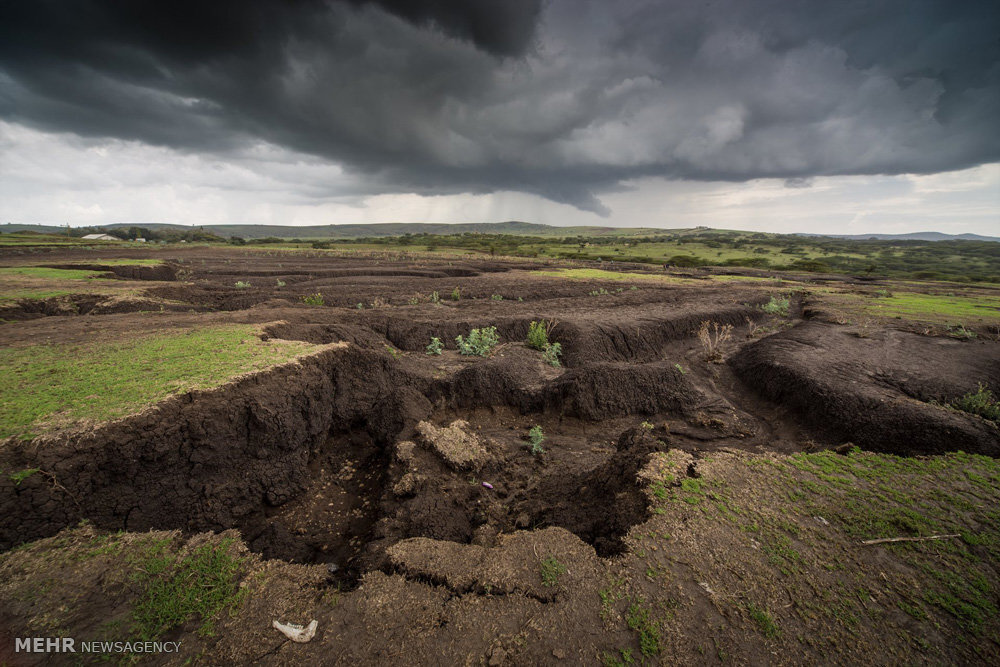Soil depletion: a neglected issue requiring urgent attention

TEHRAN – Soil is one of the most vital non-renewable resources that many organisms on the planet depend on, as it ensures food security of the nations; however, the attention paid to this valuable resource is not as much as its significance.
In 2002, the International Union of Soil Sciences (IUSS) made a resolution proposing December 5 to be World Soil Day in order to celebrate the importance of soil as a critical component of the natural system and as a vital contributor to human well-being.
The theme of World Soil day 2020, according to the Food and Agriculture Organization (FAO) campaign, is “Keep soil alive, protect soil biodiversity”.
This natural resource hosts over 25 percent of biodiversity and about 90 percent of living organisms spend part of their life cycle in the soil; it also plays an important role in supporting animal biodiversity above ground, including wildlife and domesticated livestock.
According to the latest statistics, Iran loses 2 billion tons of soil annually, which according to the 2018 report of the United Nations Development Program, the total amount of global soil erosion is 24 billion tons, so one-twelfth of all global soil erosion occurs in Iran.The most widely recognized function of the soil is its support for food production. It is estimated that 95% of our food is directly or indirectly produced on the soil. Healthy soil supplies the essential nutrients, water, and oxygen that our food-producing plants need to grow and flourish.
Soil is also crucial for ensuring the continued growth and maintenance of natural and managed vegetation, including diverse forests and grasslands and the huge breadth of species and varieties that are cultivated or managed for their food, feed, fuel, fiber, and medicinal products.
Iran’s soil erosion rate 8 times above global average
According to the latest statistics, Iran loses 2 billion tons of soil annually, which according to the 2018 report of the United Nations Development Program, the total amount of global soil erosion is 24 billion tons, so one-twelfth of all global soil erosion occurs in Iran.
This is while, Iran has about one percent of the world's land area, which means that its erosion rate is eight times higher than the global average, so Iran is suffering from severe degradation and soil erosion.
To understand the importance of soil protection, it should be said that it takes an average of 400 years to form a centimeter of soil on the planet.
In Iran, due to the severe erosion, it takes an estimated 800 years to produce a centimeter of soil, so the attention of the people and the government should be on average twice the global average.
Each ton of soil is valued at $28 in terms of metal ores, so the loss of two billion tons of soil annually means the annual loss of $56 billion, which is more than revenues from the sale of oil and agricultural products, gardens, livestock, poultry, and fisheries.
Land-use change leading cause of soil erosion
According to experts, land-use change is the leading cause of soil erosion in the country, in fact, when we destroy forests and pastures, it can be completely vulnerable to the water or wind, in which case a large volume of soil is lost when a flood occurs because there is no vegetation to protect the soil.
Due to the importance of soil protection, a law on soil conservation was ratified by Guardian Council in June 2019, which had been passed by the Majlis (Iranian Parliament) earlier in February.
The bill has been approved after 14 years of effort put in by the Department of Environment, which is the responsible body to deal with business units polluting the soil or even shut down industries contributing to soil contamination. Moreover, the owners of mining, industrial, and manufacturing units active in the field of trade are obliged to comply with the law.
As per the law, any trade or export of soil is prohibited, and only the excretion of minerals or exportation of low amounts of soil for research purposes is excluded after meeting the legal process.
However, what matters the most is the enforcement of the law.
Soil balances climatic conditions
Kioumars Kalantari, head of the natural environment and biodiversity of the Department of Environment, said that “rich biodiversity and organism of soil, by storing more and better carbon, reduce greenhouse gases that cause climate change and global warming.
There are about 3,000 billion tons of carbon in the soil, which is about 315 times the amount of carbon currently released into the Earth’s atmosphere.
One of the things that makes soil such a fundamental component of climate change is its long-term storage capacity of carbon, carbon can only live for 1 or 2 years if left on the surface, while can survive for hundreds or even thousands of years in the soil.
Carbon, in combination with soil minerals, is stabilized and will not be able to return to the Earth’s atmosphere as greenhouse gases.”
In addition, soil that stores large amounts of carbon is healthy, fertile and flexible, and is able to retain large amounts of water and nutrients, so to maintain soil health, it should not be contaminated in the first place and with new methods of crop and agricultural management increase the biological potential and health of the soil to preserve the components of biodiversity, genetic resources, and human health, he emphasized.
In the current situation, along with climate change, there are two important challenges globally, he noted, adding, at the national level, unfortunately, Iran is facing severe soil erosion.
Soil protection ensures the country’s food security, environmental health, biodiversity conservation, climate balance, and sustainable development, and we all need to have a correct understanding of the high values of soil in terms of planning, policy, conservation, as well as raising public awareness and protect it for present and future generations.
FB/MG
